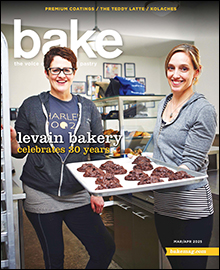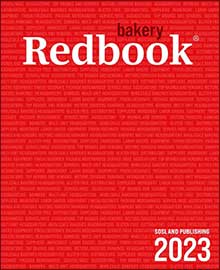In today’s world of automated bakery operations and mass-produced food, defining “artisan” can be a tricky proposition. To a baker, artisan bread is about proper, and often longer, fermentation and rest times, but to the average consumer, an artisan loaf usually is one that simply gives off the appearance of being hand-crafted. And for these purchasers, perception is reality.
While wholesale bakers’ conception of artisan might live further downstream during makeup, mixing is at the heart of the process and sets the stage for the quality of a finished artisan loaf. “Mixing of the dough may be the most important part of the whole breadmaking process,” said Bill Grutter, vice-president, BakeRite Systems. Mixing determines flour hydration, ingredient dispersion and incorporation, and it sets in motion how the dough will bake and finish.
“Resting and fermentation times play a critical role in the final product,” he continued, “but mixing prepares the dough to achieve the desired characteristics and do so consistently.”
After all, once the dough comes together in the mixer, everything becomes reality for the baker. “When bakers hold the dough in their hand, that’s when the world starts for them,” said Stephen Marquardt, sales director, food, Zeppelin Systems USA. “When it comes to pre-hydration, pre-fermentation, liquid sponges, sourdoughs, premixes — the things that have influence on the dough itself — we consider ourselves ‘dough experts.’ It’s all about the dough.”
Dough temperature is a critical factor for any type of bread — the sheer act of mixing imparts frictional energy that causes heat — but it becomes especially important in terms of artisan dough because it affects the process downstream in areas like sponge and dough development.
“Controlling dough temperature during mixing until final development is critical for a consistent fermentation process,” said Alain Lemieux, director of engineering, dough processing, AMF Bakery Systems. “The less variation in the final mixed dough, the simpler it is on the downstream process.”
To maintain consistency in dough temperature, many mixer manufacturers incorporate cooling features into their equipment design.
For instance, AMF offers individual cooling set-points on its horizontal mixers that are customizable by recipe and also take environmental factors into consideration. “Various temperature control modes (by timer versus by set-point) allow better control independent of changing environment conditions,” Mr. Lemieux said, noting improved repeatability over manual settings in adjusting for conditions such as summer or winter.
Temperature control can happen through a refrigerated jacket on the bowl or a refrigerated agitator bar, such as with horizontal mixers from Shaffer, a Bundy Baking Solution. “We provide more cooling surface, which can better control dough temperatures,” said Terry Bartsch, vice-president, sales, for Shaffer. “It’s a reason a bread manufacturer would want to consider a horizontal mixer for artisan production — that consistent, cooler dough temperature.”
Shaffer offers a refrigerated agitator as a key component of its horizontal mixers. “For us, it’s all about adding that refrigerated system that cools the bar in the triple roller-bar agitator.” The system, he said, can reduce dough temperature from 4 to 6 F°.
That said, bakers should remember that, when it comes to mixing artisan breads, temperature is about not only being lower but also being maintained for dough uniformity. “Maintaining consistent ingredient temperatures is the most effective way to produce the same temperature dough repeatedly,” Mr. Grutter said.
To that end, there is a host of other ways for keeping the temperature when friction and other factors try to put dough temps on the rise.
To continue reading this story, go to Baking Business.




